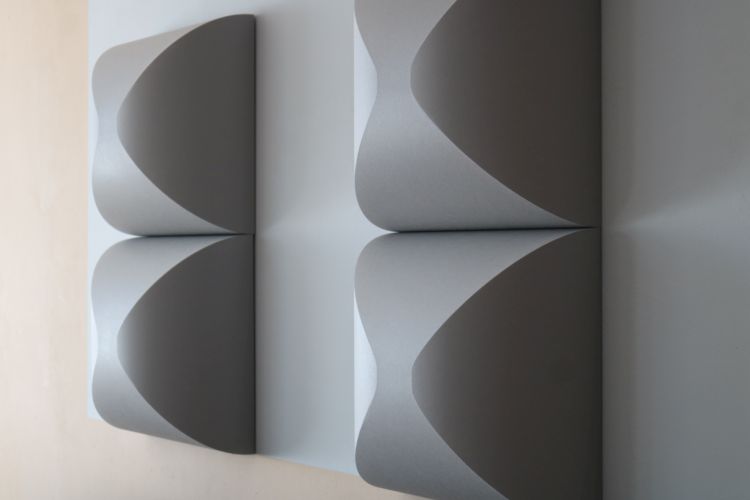
Application with dipoles
From earlier experience, I already knew that you need to address reflection issues precisely in the right spots which is why the R.T.F.S. Sirrah panel’s 48 x 48 cm format is ideal. When using them directly behind the listening position one needs to take their depth of 23 cm into account but otherwise, they are pretty unobtrusive and in my view actually make for a tasteful work of art. To see how they transform a very empty room, see also part 1 of the SiRRAH review done in audio buddy Jeroen’s setup.
Normally with SiRRAH’s, one starts with two units, one left and one right at the points of the first rearward reflections. When the precise positions have been found you can work your way up using more SiRRAH modules to increase the impact until you get it just right.
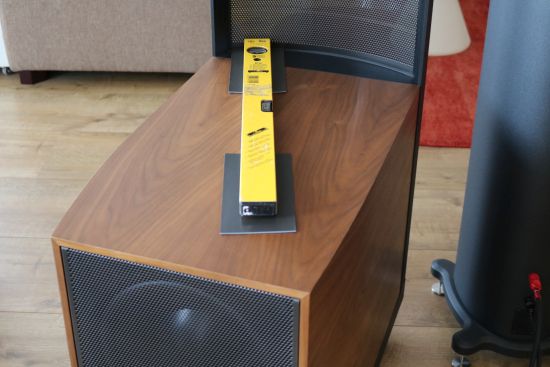
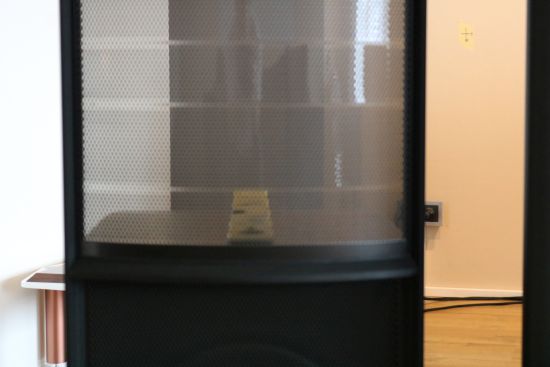
The left speakers’ direct reflection point goes right into the RTFS Big Blocks.
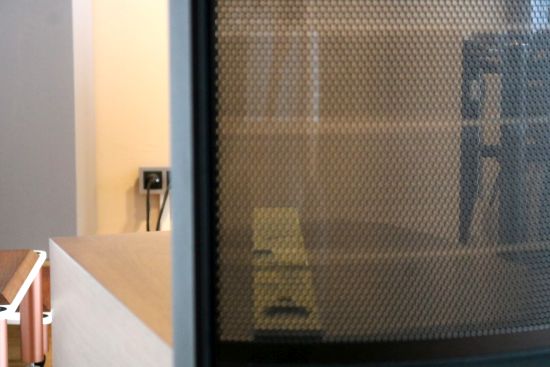
The outer edge of the speaker does aim straight at the bare wall. When standing in that position you can also clearly hear where the reflection stops.
Preparation
I started by finding the first reflection points on the front wall, 3+ meters removed from the speakers’ stator panels. Especially on their rear end, Martin Logans are very beamy, following precisely the arc that the curved stators describe. Thus, it was easy to find the first direct reflection point, and from there, the adjacent sections.
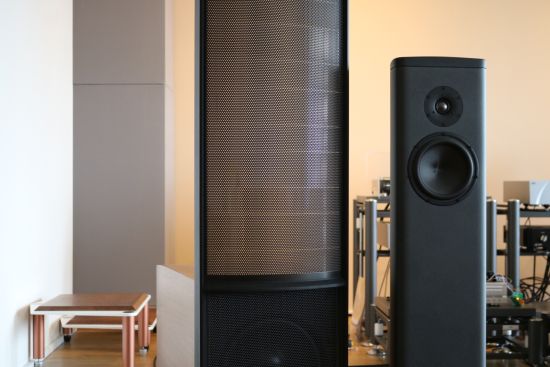
In-between the Big Blocks and the Audio Racks is where the first SiRRAH will be placed.
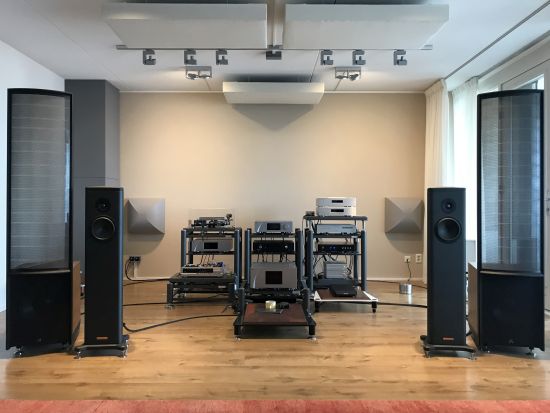
Treating the front wall
Starting with the two most obvious positions behind the Martin Logans’ first rearward reflection points at ear height, the SiRRAHs greatly reduced the flutter echo while adding more clarity to and more distinct layering within the soundstage.
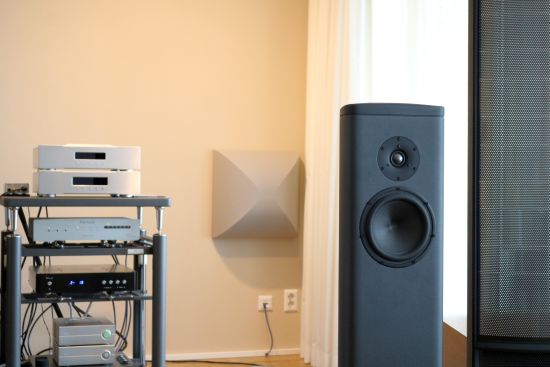
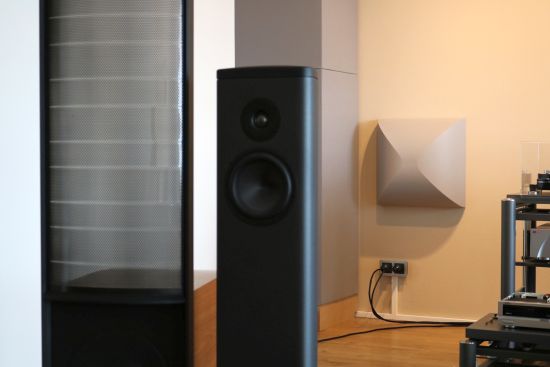
The quick result of the two SiRRAHs in this large space was so impressive that it made me lust for more. After unpacking two more units, I attached them right above the earlier two.
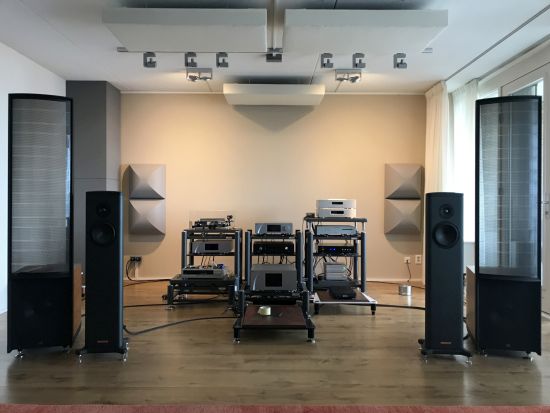
The two extra panels provided a further reduction of overall reflections but it wasn’t quite as drastic as what the first two panels achieved. With the left and right sides so much improved, the remaining reverb that lingered in the center part of the room made it obvious that only the sides of the wall had been treated.
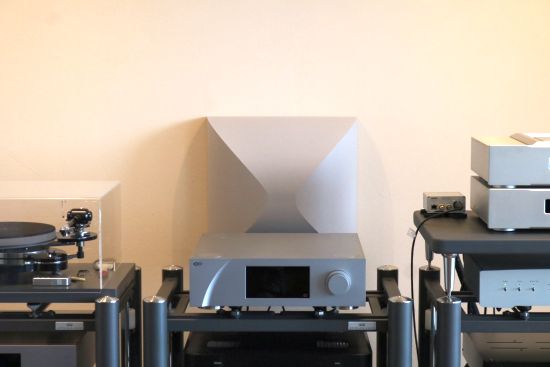
Adding a SiRRAH panel right in the middle of the front wall at the same height as the left and right ones ended up visually half-behind the rack but very clearly reduced the flutter echo. While experimenting with the height, I found that the reflections started just above the highest component in the rack and extended to above the single SiRRAH.
Adding another SiRRAH on top of the center one was the proverbial cherry on the pie, reducing the last remnants of the flutter echo while extending the soundstage further behind the speakers and making it appear more even-handed and more believable. Now, I also started hearing similar benefits as I observed in Jeroen’s setup – more isolated vocals with better focus.
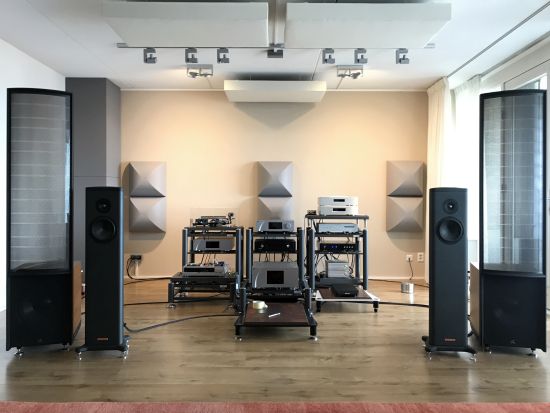
At this point, I entered a super-critical mode. Although the midrange and treble regions were amazingly clear and articulate, I simultaneously felt that the bass transients had become a little rounded. Could I be wrong about the placement of the left and right units behind the speakers? They are more than 3 meters removed from that wall so, theoretically, the rear wall should be an insignificant factor. Yet, I had this flutter echo to deal with.
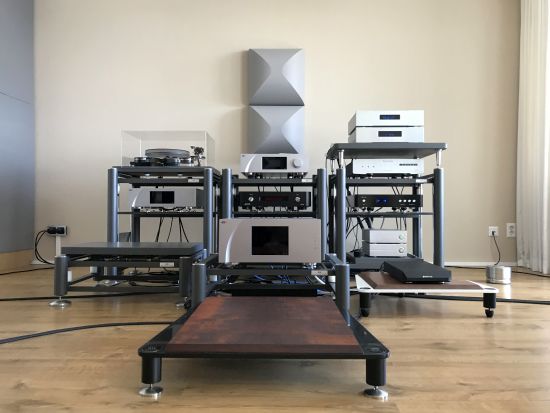
In an effort to re-balance the bass, I removed the four left and right panels while leaving the center ones in position. As hoped, this did indeed remove the roundness in the bass and reinstated the articulation and transient sharpness just the way I like it but it also very audibly brought back some of the flutter echo, this time clearly located in the left and right part of the room.
This led me to conduct some more experiments with the horizontal positions while varying the height as well, made easy by the extra sheets that Farshid so kindly added.
As it stands, the front wall exhibits three main issue areas. But the question that entered my mind was whether these should all be addressed on the front wall. The left and right ones are where the speakers beam rearward while the center position is where the forward-beamed sound ends up after being reflected off the back wall, focusing back onto the middle on the front wall.
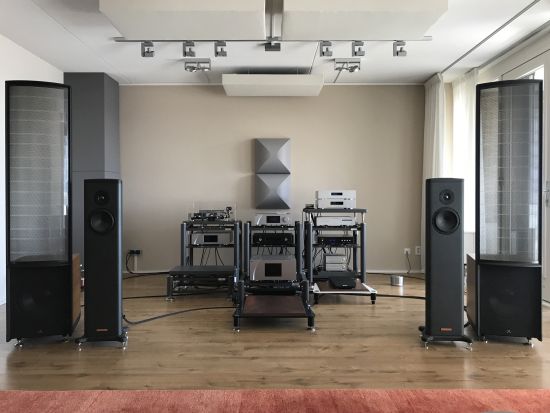
The final arrangement on the front wall
I finally accepted that, while the center two locations offered clear benefits without introducing any unwanted side effects, the left and right locations behind the speakers were just not ideal. Although I had tried to avoid it for the aforementioned reasons, it seemed that the remainder of my reflections had to be taken care of via the rear wall.
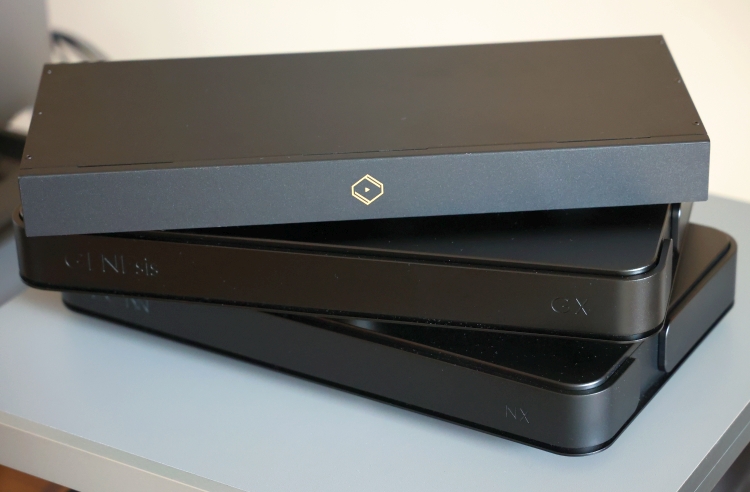
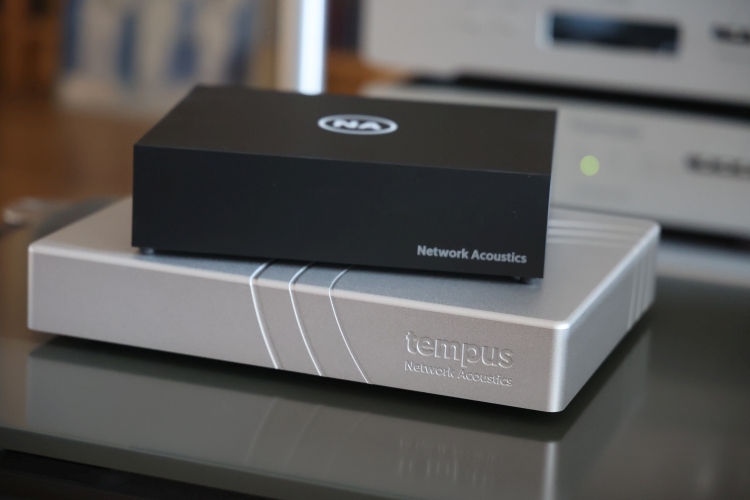

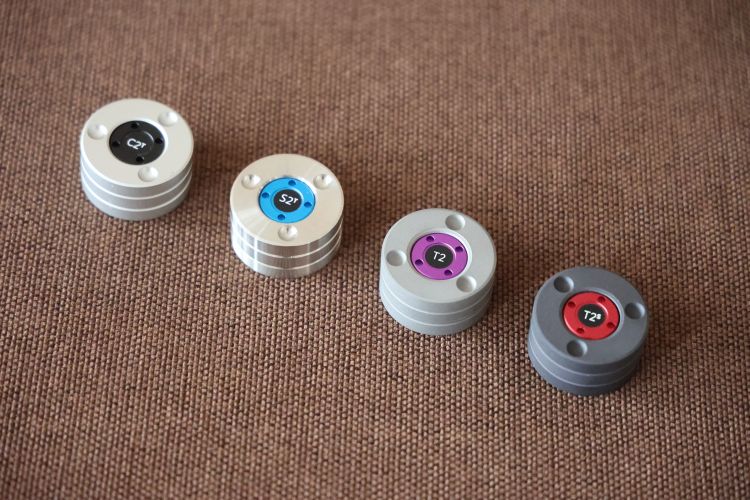
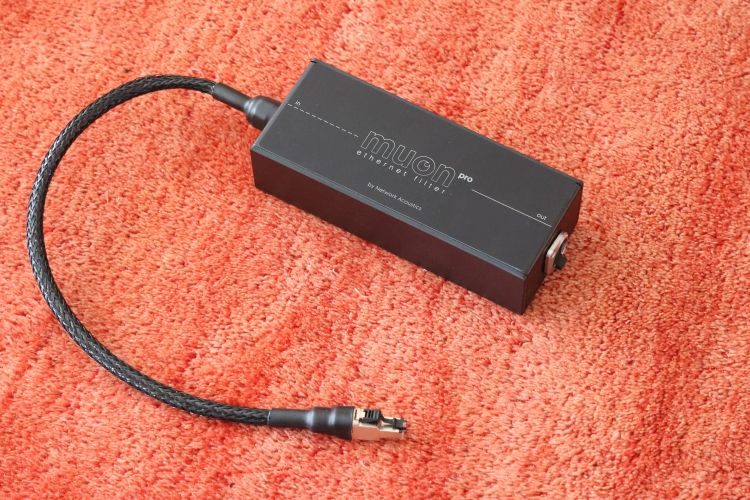
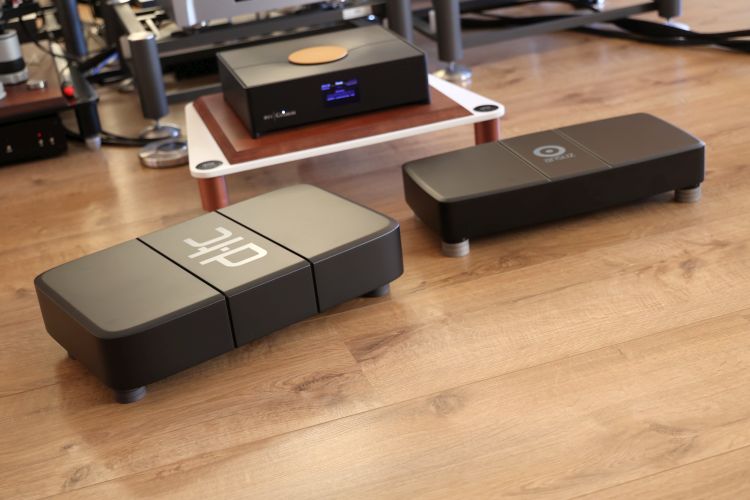
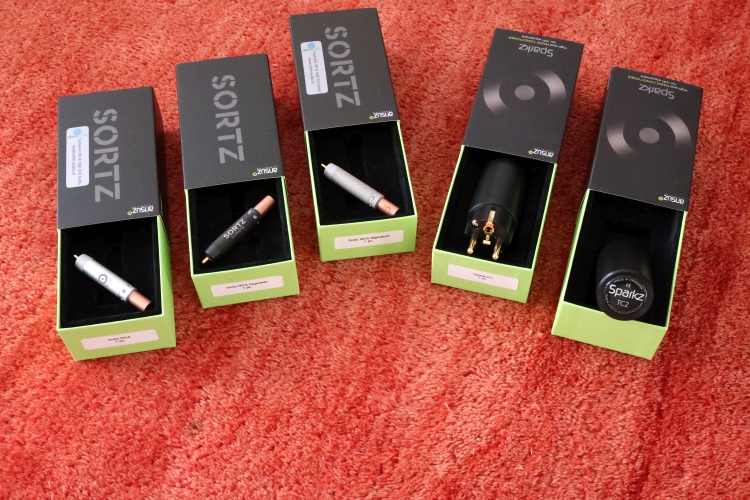
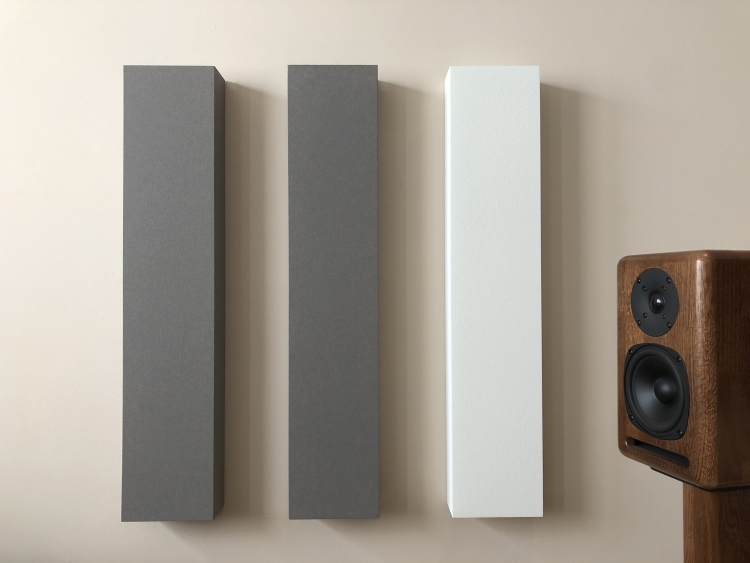
Excellent review! I currently have several GIK bass traps and Alpha Series diffusers in my room. I am very interested in trying the SiRRAH panels. Do they sell them to United States customers?
Thanks!
Hi Sean, alas, I cannot help you obtain these products but I’m sure the manufacturer can point you to a reseller.
Christiaan,
I tried to contact the manufacturer today and I have a relative that lives in Berlin attempt to contact them as well with no response. Do you have a reseller in the Netherlands that I can contact to see if they sell to customers in the USA?
Thanks again!
The Dutch reseller is Listening Matters but I’m not sure if they’d ship to the USA.
Christiaan,
I used the link you shared for Listening Matters and it was not in English. Is Listening Matters and Acoustic Matters the same company? If so, I sent Acoustic Matters a message through their website and I hope to get a response.
Lastly, I read your review of the Martin Logan ESL 15A. I have two (2) relatives that have Wilson Audio speakers and I debated on buying a pair of used Wilson’s, Martin Logan’s, B&W, and Pure Audio Project Trio 15 or Quintet 15, but I decided to go with Spatial Audio X5 open baffle speakers. Curious if you ever heard the offerings from Pure Audio Project or Spatial Audio? If not, try to get your hands on a pair for a review. Some say they sound like Maggie’s, but more dynamic. I never heard a pair of Maggie’s, so I don’t have an opinion. I’d like to read your review on the open baffle designs mentioned above.
Thanks!
Hi Sean, they are liaised. I’m sure they will get back to you now. I’ve heard many open-baffle dynamic speakers and while they share the kind of freedom from box constraints in a broadly similar way as Magnepans or other foil speakers, they do not sound like one another in any other way. Ribbon bass, midrange and treble are just a very different breed from that of dynamic drivers. There are too many factors to get in here but perhaps the biggest one is bass driver surface. Basically (and intentionally leaving lots of variables undiscussed for now), in an open baffle, you need plenty of it to overcome the acoustic cancellation that occurs naturally between front and rear. With a woofer that is too small, it will need to overcompensate in excursion and that leads to softness, rounded transients and overall slowness.
Christiaan,
You are hitting the nail on the head with the acoustic cancellation you mentioned concerning open baffle designs (OBD) if they are not designed properly or too close to the front wall. Clayton Shaw of Spatial Audio and Ze’ev of Pure Audio Project (PAP) are fully aware of those issues and I think these guys have managed that issue well, at least Spatial Audio. I haven’t heard the PAP speakers yet. OBD speakers need to be about 4 feet off the front wall to turn the listening session into a magic show. My Spatial Audio X5’s are incredible and I’m sure the X3 model are a step up in bass with the built in active 15 inch open baffle subwoofer. My X5’s have a built in 12 inch open baffle subwoofer. There is nothing slow about these speakers at all. If you get an opportunity, give the Spatial Audio a listen and see if they have addressed the things you mentioned. A guy name Ron has a YouTube channel called “New Record Day” and he goes in depth about the Spatial Audio speakers. Check it out at your leisure. There are several YouTube videos with Clayton Shaw interviews, discussing his OBD speakers.
Thanks and take care!